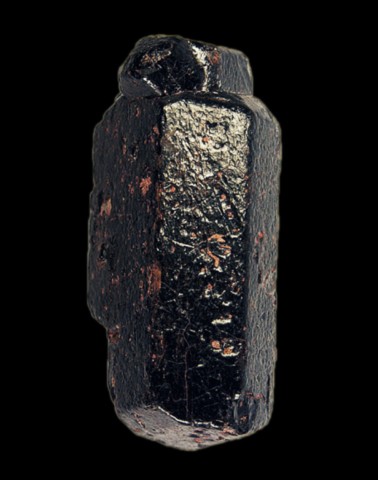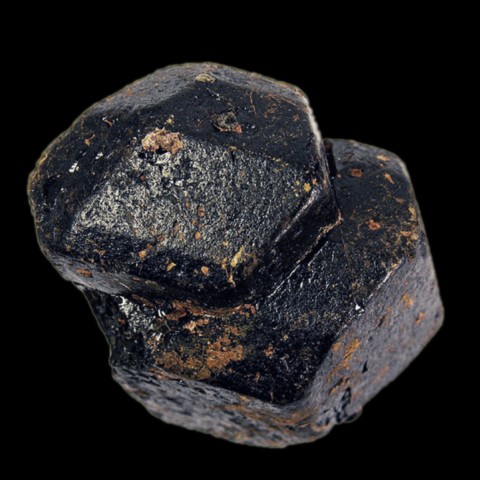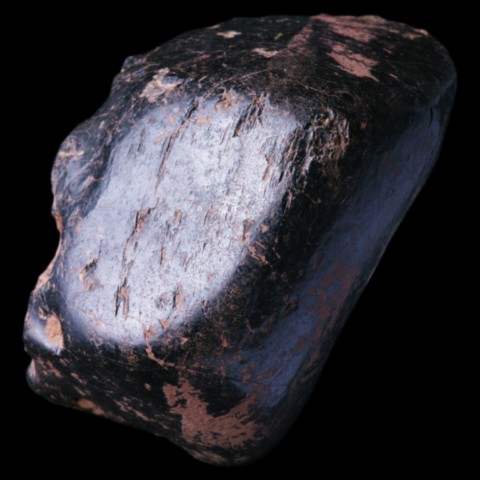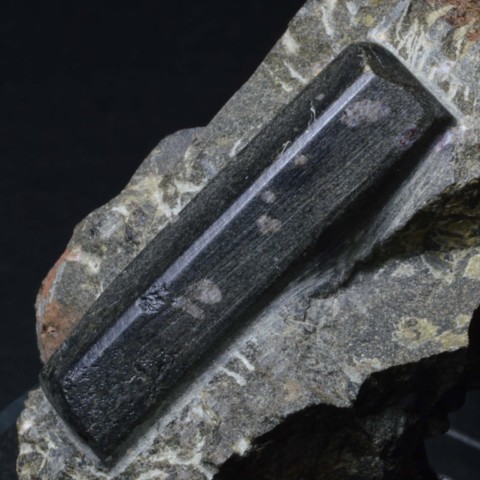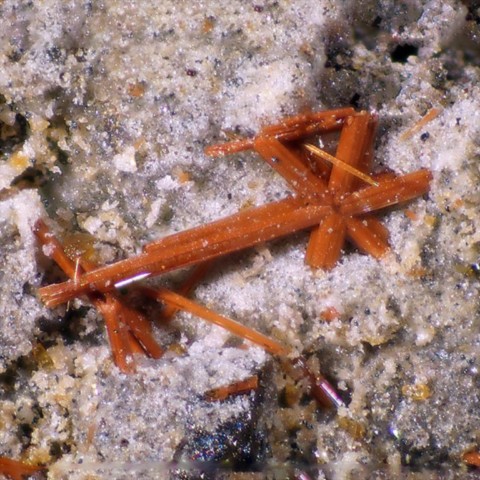 Kaersutite - Encyclopedia
Kaersutite - Encyclopedia
Class : Silicates
Subclass : Inosilicates
Crystal system : Monoclinic
Chemistry : NaCa2Mg4Ti(Si6Al2)O22(OH)2
Rarity : Rare
Kaersutite is a sodium, calcium, titanium and magnesium amphibole, formerly considered a variety of hornblende. It is now recognized as a mineral and forms a continuous series with ferro-kaersutite, its iron-bearing equivalent. It is a volcanic amphibole, present in the form of phenocrysts in alkaline volcanic rocks (trachytes and phonolites), in peridotite and gabbro nodules of alkaline basalts and also in syenites, more rarely in monzonites. Basaltic hornblende, rich in titanium and brown-black in color, is most often a ferrohornblende or a kaersutite, the distinction between the two requiring efficient analytical means. Its name comes from its locality of discovery : Kaersut (Greenland). Kaersutite forms often elongated or stocky prisms with a pseudohexagonal section, rarely doubly-terminated, with frequently rounded edges of brown-black color, rarely orange. Kaersutite is also common in masses or aggregates that are more or less fibrous to bacillary, sometimes grainy. The color is usually black-brown.
Main photo : 18 cm kaersutite from Vlcí Hora, Cernosín, Czech Republic © M. Filippi
Kaersutite in the World
Twinning
Single or multiple twins parallel to {100} as well as a star twin are known.
Fakes and treatments
No fakes recorded for this mineral species.
Hardness : 5 to 6
Density : 3.2 to 3.28
Fracture : Irregular
Streak : Brown to gray
TP : Opaque to translucent
RI : 1.670 to 1.772
Birefringence : 0.030 to 0.083
Optical character : Biaxial -
Pleochroism : Strong
Fluorescence : None
Solubility : Insoluble
Magnetism : NoneRadioactivity : None

